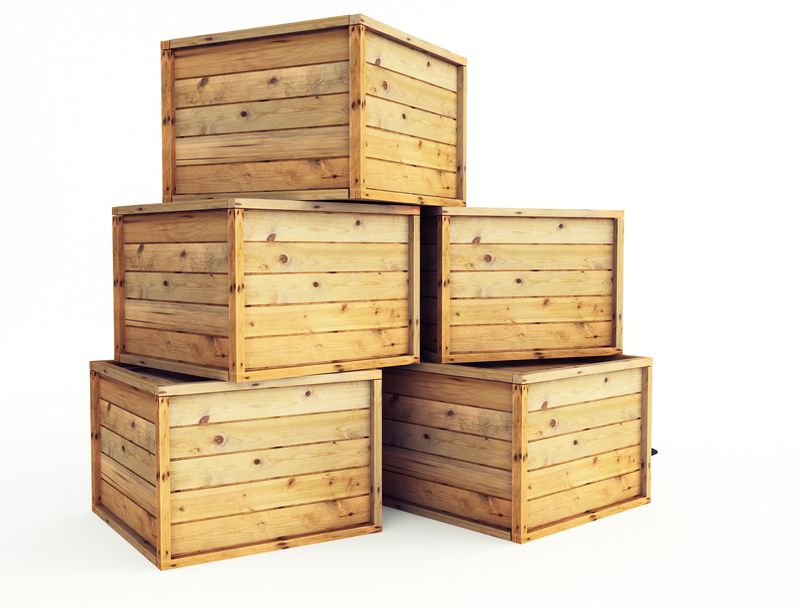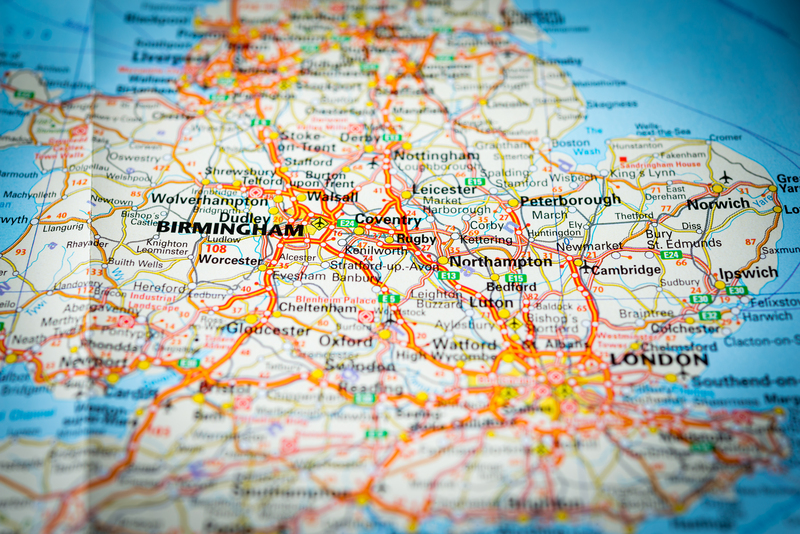Crucial Packing Insights for a Successful House Move
Posted on 04/06/2025
Crucial Packing Insights for a Successful House Move
Moving to a new home is an exciting journey, but it is also a process fraught with anxiety and meticulous planning. The secret to a stress-free move lies in how well you pack your belongings. With the right strategies and actionable packing insights, you can ensure a smooth and successful house move. In this comprehensive article, we'll delve into crucial packing tips, strategies, and expert guidance to help you make your relocation as seamless as possible.
Why Packing Properly is Essential for a Successful House Move
Packing is often underestimated during a house move, but effective packing is the backbone of a smooth transition. By applying intelligent packing techniques, you not only protect your possessions but also save time, money, and effort during both transportation and unpacking. Below, we'll explore why packing matters and how you can master this critical step.
- Prevents Damage: Thoughtful packing minimizes breakage and loss during the move.
- Improves Organization: Properly labeled and packed boxes make unpacking easier and faster.
- Reduces Stress: When everything is packed correctly, the whole process feels more manageable and less stressful.
- Saves Money: Efficient packing means you use fewer supplies and avoid costly replacement of damaged items.

The Ultimate Packing Timeline: When to Start Packing
To ensure a successful house move, it's vital to allocate enough time for packing. Ideally, begin planning your packing process at least six weeks before your move date. Here's a timeline to keep you on track:
Six Weeks Before the Move
- Take an inventory of your belongings.
- Start decluttering by sorting items into categories: keep, donate, sell, or discard.
- Gather necessary packing supplies.
One Month Before the Move
- Begin packing rarely used items, such as out-of-season clothes, books, and decor.
- Clearly label boxes with room names and contents.
Two Weeks Before the Move
- Pack essentials you won't need in the next two weeks.
- Arrange utilities and change of address.
One Week Before the Move
- Prepare your essentials box with toiletries, chargers, a change of clothes, and vital documents.
- Finish packing remaining items, apart from daily essentials.
Packing Supplies Checklist: What You Need
Having the right packing supplies makes a significant difference in the packing process for a house move. Here are the essentials:
- Durable moving boxes in various sizes
- Packing tape and dispenser
- Permanent markers or labels
- Bubble wrap or packing paper
- Stretch wrap for furniture protection
- Scissors or box cutters
- Furniture blankets
- Plastic bags for hardware and small items
- Zip ties or twist ties
- Specialty boxes (for wardrobe, dishes, electronics, etc.)
Organize these supplies in a designated packing station in your home for easy access as you work through each room.
Strategic Packing Insights for Every Room
No two rooms are exactly alike, so your packing approach should be tailored to the contents of each area. Below, we'll share actionable packing tips for a successful move by room:
1. Kitchen
- Start by packing items you use the least, such as specialty appliances and serving ware.
- Use small boxes for heavy items like canned food.
- Wrap breakables such as dishes and glasses individually with packing paper or bubble wrap.
- Label each box with contents and indicate Fragile where necessary.
2. Living Room
- Use padded boxes for electronics and label all cables and remotes.
- Pack books spine-down in small boxes to prevent overloading.
- Remove legs from furniture when possible and keep hardware in labeled bags.
3. Bedroom
- Utilize wardrobe boxes for hanging clothes to avoid wrinkles.
- Pack individual jewelry, shoes, and accessories in separate, labeled pouches or containers.
- Disassemble large furniture and keep all screws, bolts, and tools together in marked bags.
4. Bathroom
- Seal liquid toiletries in plastic bags to avoid spills.
- Dispose of expired or empty items.
- Pack frequently-used products in a clear plastic bin for easy access.
5. Garage and Storage Spaces
- Sort through tools and equipment, discarding anything broken or unnecessary.
- Use small, sturdy boxes for heavy items like tools or gardening equipment.
- Keep hazardous materials and chemicals out of the moving truck.
Smart Labeling and Organization
Effective labeling is a game changer for a carefree house move. Here's how to keep track of your belongings:
- Label each box with the destination room, a brief description of the contents, and whether they are fragile.
- Use color-coded stickers or markers for each room to make unloading easier.
- Assign a unique number to every box; maintain a spreadsheet or notebook cross-referencing numbered boxes with their contents.
- Prioritize boxes by numbering those with essential items for quick access on moving day.
Decluttering Before Packing: Maximize Efficiency
The saying "less is more" is especially true for moving. Decluttering reduces the volume you need to pack and move, lightening your load both physically and emotionally. Here's how to approach it:
- Sort methodically. Work one room at a time to avoid overwhelm.
- Simplify your possessions. Be honest about what you want to keep, what you can donate, and what is best discarded or sold.
- Arrange pickups or drop-offs for donations, and list valuable items for sale as you progress.
- Shred old paperwork and responsibly dispose of hazardous materials such as old paint, batteries, and chemicals.
Expert Packing Techniques for Fragile and Valuable Items
Moving fragile or valuable items requires care and special attention. Here's how to ensure your cherished possessions arrive safe and sound:
Tips for Fragile Items
- Double wrap glassware, ceramics, and other breakables with bubble wrap or foam sheets.
- Use dish pack boxes with double-wall construction for added protection.
- Cushion the bottom and sides of boxes with packing peanuts or crumpled paper.
- Place heavier items at the bottom and lighter ones on top.
- Label as "Fragile" and keep these boxes on top when transporting.
Tips for Valuables
- Pack jewelry, watches, and small valuables in personal bags or lockboxes, and transport them yourself if possible.
- Photograph valuable items before the move for insurance purposes.
- Use secure moving containers and avoid labeling them in a way that draws attention to contents.
Essential Packing Mistakes to Avoid
Even the most detailed plans can go awry if you make avoidable packing mistakes. Here are some common pitfalls and how to prevent them:
- Leaving packing too late. Procrastination adds unnecessary stress. Stick to your timeline.
- Overfilling boxes. Heavy boxes are difficult to move and prone to damage.
- Skipping labels. Unlabeled boxes delay unpacking and increase the risk of items breaking.
- Forgetting an essentials box. Always set aside important daily items for your first night in the new home.
- Neglecting to protect fragile items. Always use sufficient padding for delicate possessions.
Hiring Professional Packers: Should You Outsource?
If the idea of packing feels overwhelming, consider hiring professional movers or packers. Here are the advantages and considerations:
- Time-saving: Professional packers can complete the process much faster than you could alone.
- Expertise: Movers are trained to pack fragile and awkwardly-shaped items securely.
- Liability: Most companies cover damages if professionals handle the packing.
- Cost: Weigh the expense against the benefits, especially for long-distance or large moves.
If you opt for professional help, book early, research companies, and check reviews to ensure a reliable and trustworthy service.
Moving Day: Packing for the Big Day
Moving day can be hectic, but with good planning, you can minimize chaos:
- Confirm logistics with your moving company or helpers ahead of time.
- Have your essentials box, important papers, and valuables set aside for personal transportation.
- Do a final walk-through to ensure nothing is left behind.
- Protect high-traffic areas in both properties to avoid damage while loading and unloading.
- Keep cleaning supplies accessible for last-minute touchups.

Unpacking Tips for an Organized Move-In
Packing efficiently is only half the battle of a successful house move. Here's how to ensure smooth unpacking:
- Begin by unpacking essentials and items for the kitchens, bathrooms, and bedrooms.
- Refer to your box inventory and color-coded labels to unpack in order of priority.
- Break down empty boxes as you go to avoid clutter.
- Take your time organizing--remember, it's fine to adjust layouts as you settle in.
Conclusion: Your Checklist to Packing Success
Mastering the art of packing is central to a hassle-free and successful house move. By starting early, using the right materials, staying organized, and applying the packing insights shared here, you can turn what is often a stressful event into a rewarding transition. Whether you're moving across town or to a different country, remember these crucial packing insights for a smooth move:
- Start early and follow a timeline
- Declutter before you pack
- Use quality packing materials
- Pack room by room with attention to detail
- Label wisely and keep an inventory
- Take special care with fragile and valuable items
- Consider professional help if needed
- Prepare for moving day and organized unpacking
With these actionable packing insights, your house move can be efficient, organized, and far less stressful. Happy moving!



